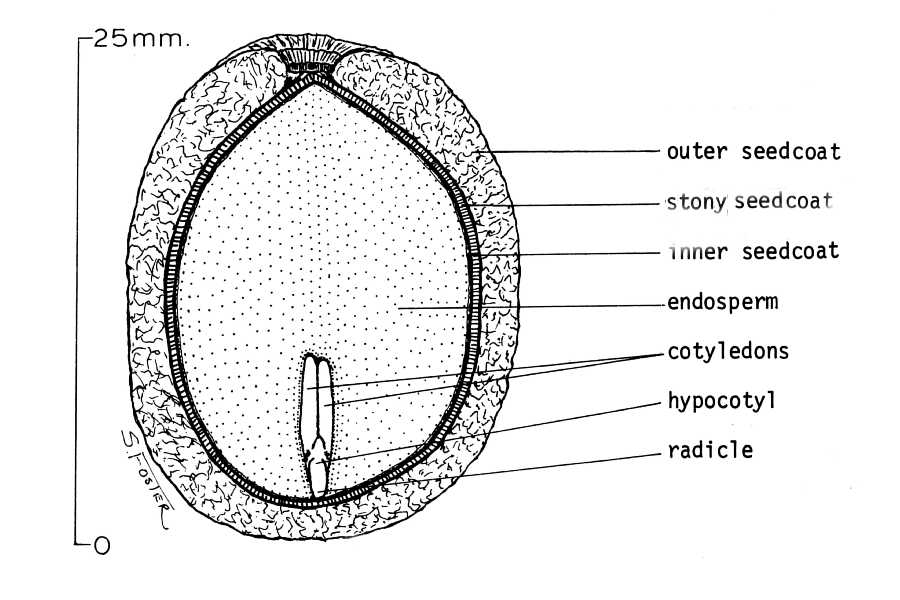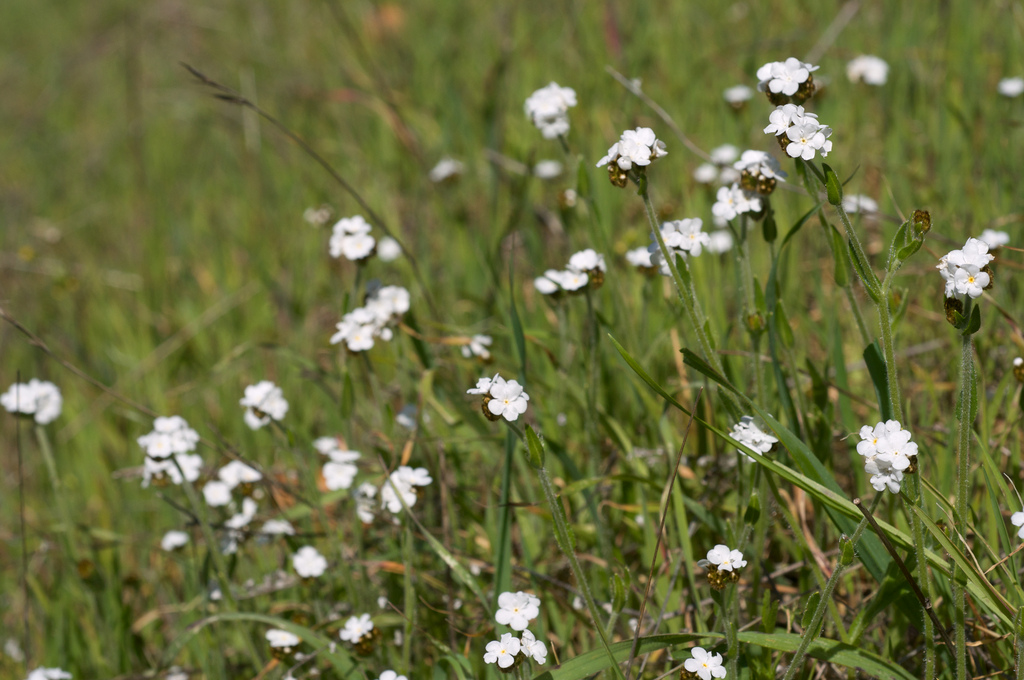Reproduction in Plagiobothrys nothofulvus
While not much is known about the life history and reproduction
habits of Plagiobothrys nothofulvus in particular, it can
be assumed that its mode of reproduction is similar to that of
other angiosperms, especially those that comprise its family,
Boraginaceae. Two genera
that fall into the same family as Plagiobothrys,
Lithodora and Glandora, rely on interactions with
various pollinators to be able to produce their flowers (Ferrero
et. al 2011). Pollination may also be accomplished by wind.
Pollination is extremely important to P. nothofulvus
because it allows for the transfer of pollen from the stamen
(male reproductive organ) to the pistil (female reproductive
organ) (Campbell et. al 2008, UC-Clermont Biology 2014).
The stamen is comprised of a filament ending in an anther
(UC-Clermont Biology 2014). The anther is where the male
gametophyte is
formed; this gametophyte is known as a pollen grain. Four pollen
grains are formed when a microsporocyte, diploid cell in the anther
undergoes meiosis (Campbell et. al 2008). The pollen grains, in
turn, are comprised of a large, vegetative cell and a smaller germ
cell, the latter of which eventually divides
mitotically to
produce two sperm cells (Campbell et. al 2008)
Multiple stamens surround the flower’s pistil, or female reproductive organ. At the top of the pistil is the stigma, which is sticky to help pollen grains from the anthers attach (UC-Clermont Biology 2014). The ovary contains an ovule, which is where the female gametophyte is formed via meiosis. This gametophyte is known as the embryo sac, and is one of four daughter cells created when the megasporocyte undergoes meiosis. In meiosis in the ovary, only one daughter cell goes on to become a gametophyte, while the other three simply disintegrate (Campbell et. al 2008).
Once a pollen grain comes into contact with the sticky tip of the stigma, the grain develops into a pollen tube, which grows to extend down the body of the ovary, also known as the style, until it reaches the ovule (Campbell et. al 2008). Here, each of the two sperm cells generated in the pollen grain fuse with the two of the nuclei of the female gametophyte. One fusion results in a diploid zygote, while the other results in what will later become the endosperm of the seed. Double fertilization is actually really clever since it ensures that endosperm won’t develop in ovules without fertilized eggs, which would be a huge waste of energy (Campbell et. al 2008).
 After fertilization occurs, a seed develops within the ovule. The
seed is made up of three main parts. The first part is the plumule,
which consists of two baby leaves and the meristem. Next are the
either one or two cotyledons, which act as the zygote’s source of
food (UC-Clermont Biology 2014). Plagiobothrys nothofulvus is a
dicot because it has two cotyledons (Calflora 2014). Finally, the
seed contains a hypocotyl and a radicle, which develop into the
lower stem and the roots of the plant respectively (Campbell et. al
2008).
After fertilization occurs, a seed develops within the ovule. The
seed is made up of three main parts. The first part is the plumule,
which consists of two baby leaves and the meristem. Next are the
either one or two cotyledons, which act as the zygote’s source of
food (UC-Clermont Biology 2014). Plagiobothrys nothofulvus is a
dicot because it has two cotyledons (Calflora 2014). Finally, the
seed contains a hypocotyl and a radicle, which develop into the
lower stem and the roots of the plant respectively (Campbell et. al
2008).
Of course, none of this process would be possible without the
flowers’ pollinators. For Plagiobothrys nothofulvus and
other members of the family Boraginaceae, these typically include
bees, flies, and insects from the order Lepidoptera such as
Proserpinus clarkiae, which is mainly
comprised of moths and butterflies (Zomlefer 1994). Without these
vital interactions, P. nothofulvus
would not be able to reproduce! Like many other flowers, it has
mechanisms to prevent self-fertilization, which would decrease
genetic diversity.
Home Learn more about the Popcorn flower's interactions!
